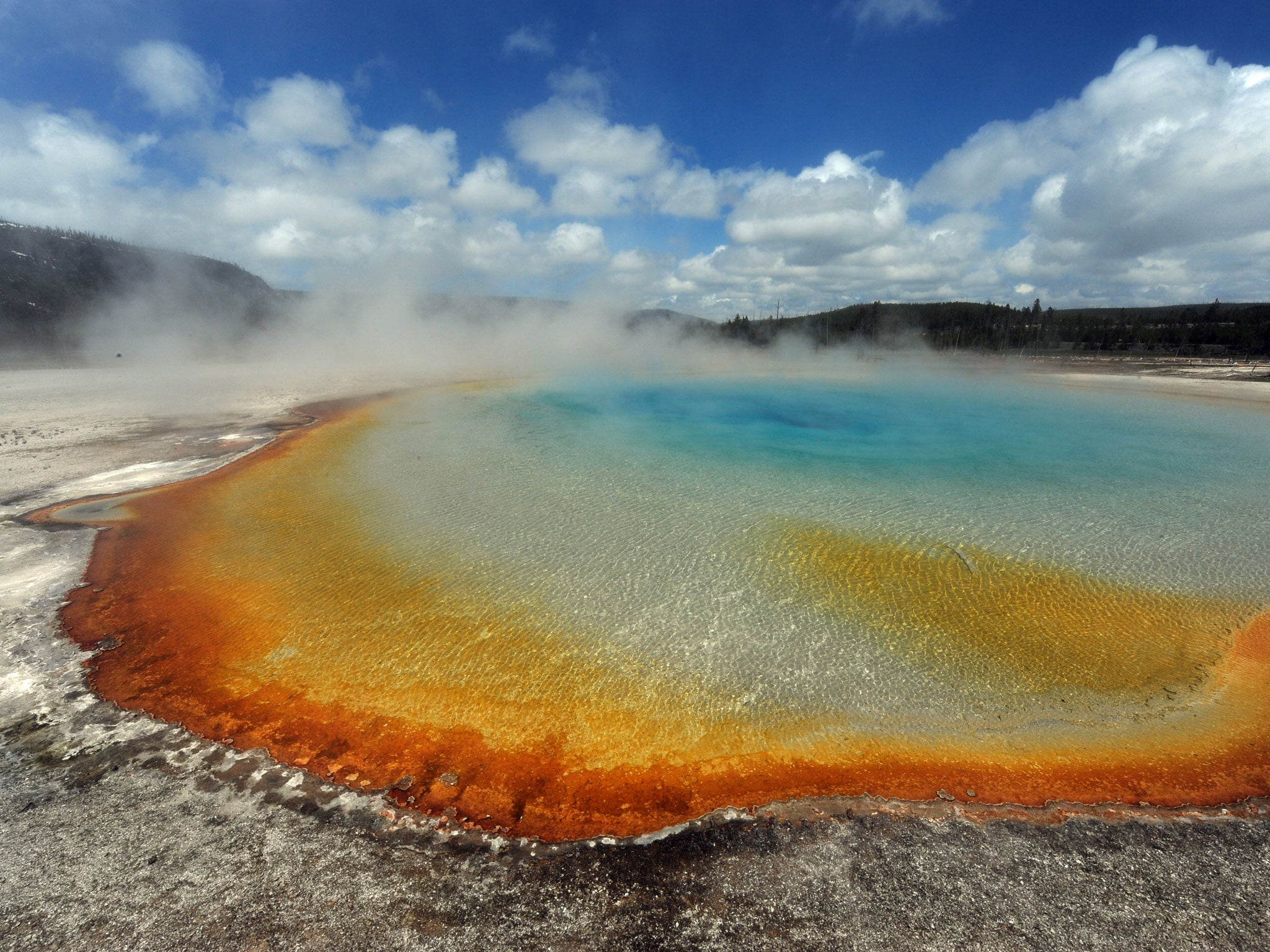Risk of supervolcano eruption big enough to 'affect the world' far greater than thought, scientists say
Scientists have analysed the molten rock within the dormant supervolcano beneath Yellowstone National Park and found that eruption is possible without any external trigger

Your support helps us to tell the story
From reproductive rights to climate change to Big Tech, The Independent is on the ground when the story is developing. Whether it's investigating the financials of Elon Musk's pro-Trump PAC or producing our latest documentary, 'The A Word', which shines a light on the American women fighting for reproductive rights, we know how important it is to parse out the facts from the messaging.
At such a critical moment in US history, we need reporters on the ground. Your donation allows us to keep sending journalists to speak to both sides of the story.
The Independent is trusted by Americans across the entire political spectrum. And unlike many other quality news outlets, we choose not to lock Americans out of our reporting and analysis with paywalls. We believe quality journalism should be available to everyone, paid for by those who can afford it.
Your support makes all the difference.The eruption of a “supervolcano” hundreds of times more powerful than conventional volcanoes – with the potential to wipe out civilisation as we know it – is more likely than previously thought, a study has found.
An analysis of the molten rock within the dormant supervolcano beneath Yellowstone National Park in the United States has revealed that an eruption is possible without any external trigger, scientists said.
Scientists previously believed many supervolcanic eruptions needed earthquakes to break open the Earth’s crust so magma could escape. But new research suggests that this can happen as a result of the build-up of pressure.
Supervolcanoes represent the second most globally cataclysmic event – next to an asteroid strike – and they have been responsible in the past for mass extinctions, long-term changes to the climate and shorter-term “volcanic winters” caused by volcanic ash cutting out the sunlight.
The last known supervolcanic eruption was believed to have occurred about 70,000 years ago at the site today of Lake Toba in Sumatra, Indonesia. It caused a volcanic winter that blocked out the sun for between six to eight years, and resulted in a period of global cooling lasting a thousand years.
A supervolcano under Yellowstone Park in Wyoming last erupted about 600,000 years ago, sending more than 1,000 cubic kilometres of ash and lava into the atmosphere – about 100 times more than the Mount Pinatubo eruption in the Philippines in 1982, which caused a noticeable period of global cooling.
Following Pinatubo’s eruption, the global average temperature fell by about 0.4C for several months. Scientists predict that a supervolcanic eruption would cause average global temperatures to fall by about 10C for a decade – changing life on earth.
Scientists have analysed magma from the Yellowstone caldera, a 55-mile-wide underground cavern containing between 200 and 600 cubic kilometres of molten rock, to see how it responds to changes in pressure and temperature.
Using a powerful X-ray source at the European Synchrotron Radiation Facility in Grenoble, France, the researchers found that the density of the magma decreased significantly at the high temperatures and pressures experienced underground.
Density variations between magma and the rock surrounding it means that the lava within the supervolcano’s caldera can produce big enough forces to break through the earth’s crust, allowing the molten rock and ash to erupt from the surface, the scientists said.
“The difference in density between the molten magma in the caldera and the surrounding rock is big enough to drive the magma from the chamber to the surface,” said Jean-Philippe Perrillat of the National Centre for Scientific Research in Grenoble.
“The effect is like the extra buoyancy of a football when it is filled with air underwater, which forces it to the surface because of the denser water around it,” Dr Perrillat said.
“If the volume of magma is big enough, it should come to the surface and explode like a champagne bottle being uncorked.”
The study, published in the journal Nature Geoscience, was possible because the X-ray machine at Grenoble was able to take accurate density measurements at temperatures of up to 1,700C and pressures 36,000 times greater than normal atmospheric pressure.
“The results reveal that if the magma chamber is big enough, the overpressure caused by differences in density alone are sufficient to penetrate the crust above and initiate an eruption,” said Professor Carmen Sanchez-Valle of the Swiss Federal Institute of Technology (ETH) in Zurich, who led the study.
Preventing a supervolcanic eruption is not possible, but scientists are currently trying to devise methods of monitoring the pressure of underground magma in order to predict whether one is imminent.
Dr Perrillat said there are no known supervolcanoes that are in danger of erupting in the foreseeable future, and it would take at least a decade or so for the magma pressure within a caldera to build up to a point where an eruption is likely.
Join our commenting forum
Join thought-provoking conversations, follow other Independent readers and see their replies
Comments